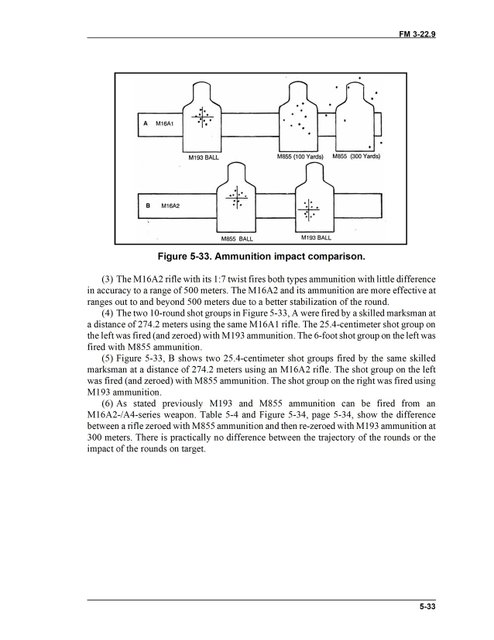You see a lot of post about bullet twist. Seems lots of people want to go to make do twist. Many dont agree with the Greenhill Fomula because it seems to call for a faster twist then one thinks he needs.
I disagree, I'm of the IF IN DOUBT, go faster crowd. Do you notice bullet makers and reloading manuals state for a given bullet, X TWIST OR FASTER.
Notice the "OR FASTER" part.
Anyway the Army did some test (listed in their M-16 Marskmanship Manual) that show the results of firing M193 (55 gr) and M 855 (62 gn) out of each, 1-12 twist M16A1, and 1-7 twist M16A2 at 500 yards. As you can see the 1-7 shoots both quite well, the 1-12 has problems with the heavier bullets.
The manual did indicate past 500 yards the heavier bullet does preform better in the faster twist.

I disagree, I'm of the IF IN DOUBT, go faster crowd. Do you notice bullet makers and reloading manuals state for a given bullet, X TWIST OR FASTER.
Notice the "OR FASTER" part.
Anyway the Army did some test (listed in their M-16 Marskmanship Manual) that show the results of firing M193 (55 gr) and M 855 (62 gn) out of each, 1-12 twist M16A1, and 1-7 twist M16A2 at 500 yards. As you can see the 1-7 shoots both quite well, the 1-12 has problems with the heavier bullets.
The manual did indicate past 500 yards the heavier bullet does preform better in the faster twist.


